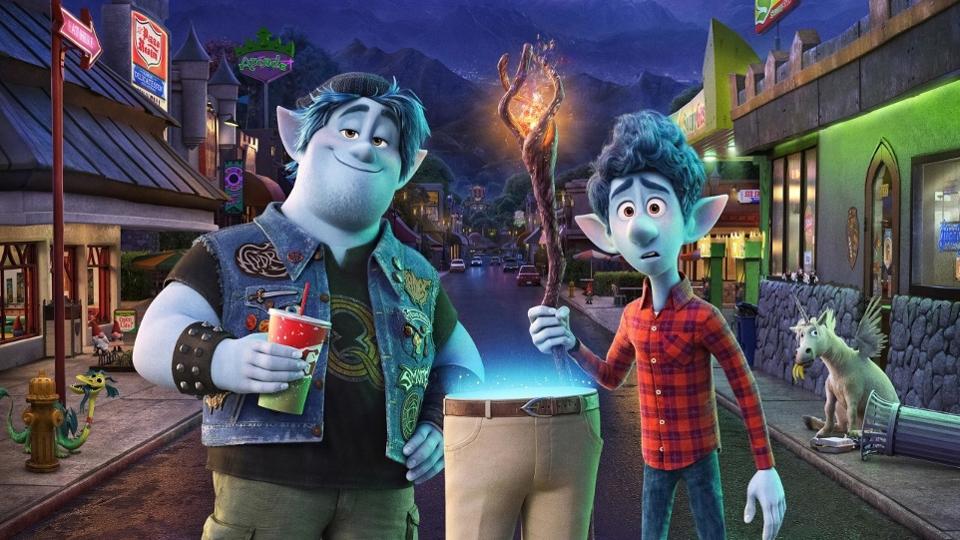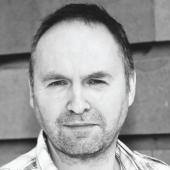The 10 best 3D movies of 2020
We reveal the best 3D movies coming to a big screen near you this year.

If you're a fan of 3D movies, you'll be ecstatic that there are so many around these days. In fact, computer graphics and visual effects are now such an integral part of the filmmaking process, it’s easier to list the films without CG than the ones with. And as the technology matures, even movies with less-than-blockbuster budgets can feature stellar visuals.
Not every VFX sequence is seamless, but in general they’re all pretty good, and a quick glance at any recent making-of video will reveal just how much CG there is in movies (as well as TV). Shots populated with tanks and helicopters often feature no real-world hardware; skylines and cloudscapes are added in post; even minor crowd scenes are populated with virtual characters. The lines between real and fake have never been so blurred.
Of course, lots of CG isn’t a guarantee of success (quite the opposite in a lot of cases), but if you regularly head to the big screen for escapism, then 2020 has plenty of eye candy on offer.
If you fancy making your own 3D content, try our selection of Cinema 4D tutorials, or our pick of the best free 3D models.
01. The Invisible Man
In yet another retelling of the classic H.G. Wells tale, The Invisible Man pits Elizabeth Moss (The Handmaid's tale) against a sociopathic ex who intends to taunt her, seemingly from beyond the grave (spoiler: he's not dead, just perfectly transparent).
With just the sole VFX vendor on the job – Australia-based Cutting Edge – it certainly won't be on the same CG scale as Paul Verhoeven's stunning 2000 flick, Hollow Man, but this creepy psychological tale of revenge is tailor-made for some subtle and seamless visual trickery.
02. Bloodshot
Based on the popular Valiant comic character, Bloodshot has Vin Diesel as the apt-named soldier, Ray Garrison, who finds himself back from the dead, teeming with nanotechnology that gives him super-strength and heals his wounds. Part Universal Soldier, part Robocop, part Deadpool, Garrison begins to remember his past and decides to wreak vengeance on the men who assassinated him and his wife.
Daily design news, reviews, how-tos and more, as picked by the editors.
Scenes of explosive action, gory violence, and Vin Diesel being rebuilt on the fly by swarms of nanites, are delivered by a trio of VFX vendors: Image Engine, Method Studios and Rodeo FX. If we're honest, the CG doubles in the trailer are a bit dodgy, but otherwise this looks like outrageously rambunctious, gruesome fun.
03. A Quiet Place Part 2
Tense 2018 thriller A Quiet Place marked the directorial debut of John Krasinski (from the US version of The Office) who starred alongside his wife Emily Blunt. An infestation of alien monsters who hunt by sound alone forces a family to live a life of enforced silence. Having raked in $340 million on budget of $17 million, a sequel was very much on the cards, which picks up after the events of the first film, with Blunt shepherding her three kids as they flee the family home.
The vicious, gangly extraterrestrials are the focus – if not the stars – of the show, and Industrial Light & Magic is back on creature creation duties. The original was a wonderfully nerve-jangling, if somewhat low-key, affair, so we look forward to seeing how the sequel raises the stakes, both visually and in terms of shocks.
04. Onward
The first of two Pixar feature-length films for 2020 (Soul follows in June), Onward recounts the tale of two elf brothers – voiced by Tom Holland and Chris Pratt – on a quest to reinstate their dead father for a single day using his spell, magical staff and an enchanted stone. When the spell only does half the job, the pair embark on quest to discover if there still some magic left in their suburban fantasy world.
Onward is recognisably a Pixar film, marked by the studio's signature look and customary quality. After a string of (admittedly successful) sequels, it's nice to see an original story – the first since 2017's Coco (see our review here). After seven years of production, more than 97,000 storyboard cards, and countless thousands of hours of rendering, Onward finally makes it debut on March 6.
05. The New Mutants
The 13th (and possibly final) instalment in the X-Men saga, The New Mutants has been the subject of multiple delays and reshoots. However, these have been done with good reason, in order to reinstate the horror aspect of director Josh Boon's original vision.
Set in a spooky secret facility intended to make the mutants 'better', we follow a brat-pack of young TV and film stars as they attempt to escape. The film has a real haunted house feel, and is a distinct move away from the usual colourful bombast of previous X-Men movies. Even though the film was shot using lots a practical effects to reinforce the realism, you can't make a mutants film without CG, and with visuals provided by DNEG, Method Studios and MPC, there should be plenty of fantastical powers on display.
06. Artemis Fowl
Disney's take on the young adult book series by Eoin Colfer was due for release last August, but is now scheduled for release in May. Artemis Fowl II – played by newcomer Ferdia Shaw – is a super intelligent 12-year-old criminal mastermind. In order to restore the family fortunes, Fowl uncovers the existence of fairies (long driven underground by human greed), captures one and holds her for ransom. This invokes the Lower Elements Police (LEP) who set out to thwart Artemis' plans.
The fantastical nature of the books is brought vividly to life by the combined efforts of MPC and Framestore, with previs/postvis and virtual production by Argon and Nvizage. In terms of VFX, the trailer pretty much has it all, from the vast subterranean fairy world to magical spells and weaponry to shape-shifting elves. Could this be the start of another big franchise for the House of Mouse?
07. Black Widow
Avengers: End Game might have signalled the end of the Avengers story arc, but the MCU continues with this standalone tale of Natasha Romanoff, neatly set between the events of Civil War and Infinity War. The titular KGB assassin is on the run, and heads back home to tie up some old loose ends, linking up with her fellow Black Widow, Yelena Bolova, and ageing superhero Red Guardian, played by David Harbour.
The action is a bit more grounded than recent Avengers movies, with more traditional stunts, but that doesn't prevent the likes of Digital Domain, Scanline VFX and SSVFX providing some terrific virtual landscapes, avalanches, explosions and a seemingly terminal freefall sequence.
08. Wonder Woman 1984
Easily the best movie in DC's own extended universe, it wasn't a great shock that Diana Prince (Gal Godot) would be back in action again. It's slightly more surprising to see Chris Pine reprise the role of Steve Trevor, given his demise in the first movie, but hey, comics, right? This time around, the Princess of Themyscira faces the twin threats of megalomaniac businessmen Maxwell Lord and the Cheetah, played by Kristen Wiig.
Set in 1984, Wonder Woman gives the movie makers free rein to make lots of time travel and colourful pop culture gags, but we're mainly here for the action: explosions, slo-mo bullet time, golden lassoing and so on. For that you can thank, DNEG and Method Studios, who are regulars on DC movies, plus Framestore.
09. Ghostbusters Afterlife
At last, a trailer that’s properly packed with VFX action. The new Godzilla movie sees the world’s favourite Kaiju do battle with Mothra, Rodan, and his nemesis, the three-headed King Ghidorah. As you'd expect with scenes of skyscraper-tall monsters wreaking city-wide havoc, the film calls on the services of multiple vendors, including MPC, DNEG, Method Studios, Rodeo FX and Raynault VFX.
Stranger Things’ Millie Bobby Brown makes her feature film debut, and the movie is a monster in every respect, from the massive battling 'titans' to the colossal scale of destruction. It’s a proper old-school disaster flick, and a must-see for fans of epic VFX.
10. Morbius
Buoyed by its success with the Spider-Man and Venom films, Sony Pictures has extended its own mini Marvel Universe with Morbius, the tale of a scientist who, in an effort to cure his own rare blood disease, infects himself with a strain of vampirism. Once barely able to walk, biochemist Michael Morbius – played by Jared Leto – suddenly gains a chiselled beach bod and superhuman powers.
As you'd expect from a Marvel character film, this is a CG-laden affair, calling on the skills of Digital Domain, Lola Visual Effects and Storm Studios to deliver a range of body and face swaps, supernatural particle effects and bats, lots of bats.
Related articles:

Steve has been interested in CG for many years. He was a regular contributor to 3D World and edited the magazine for two years, and has worked for other magazines including Edge, T3, Official UK PlayStation magazine, Laptop magazine and Windows Visa: The Official Magazine. For Creative Bloq, he mainly contributes tutorials and reviews creative kit.
